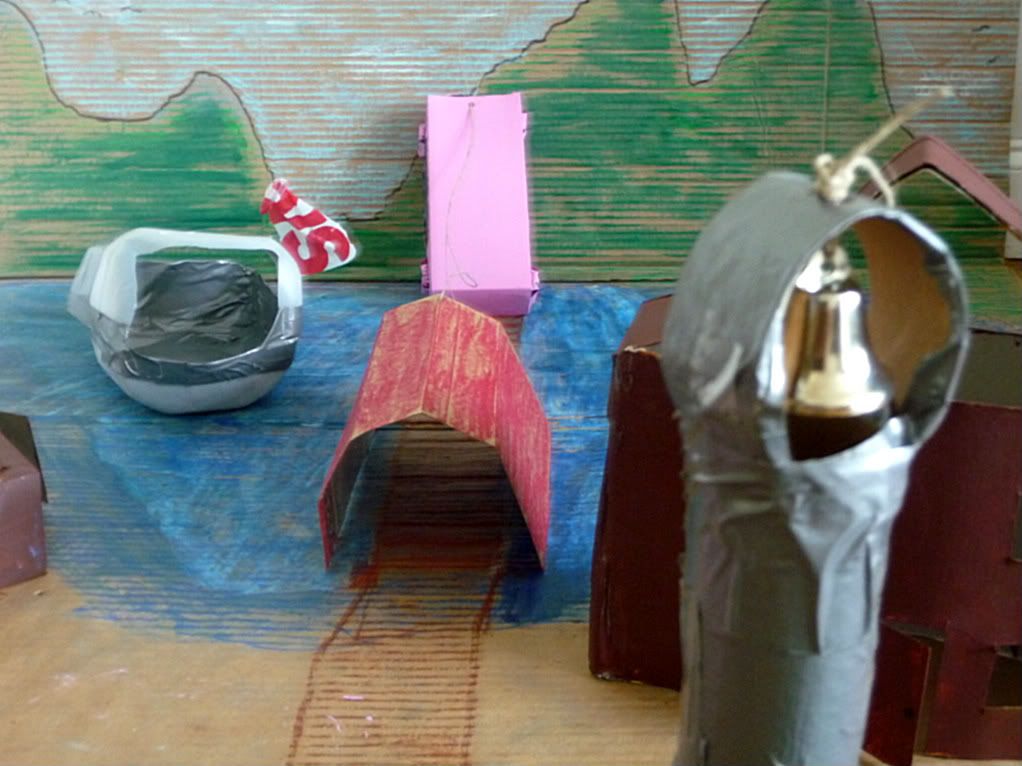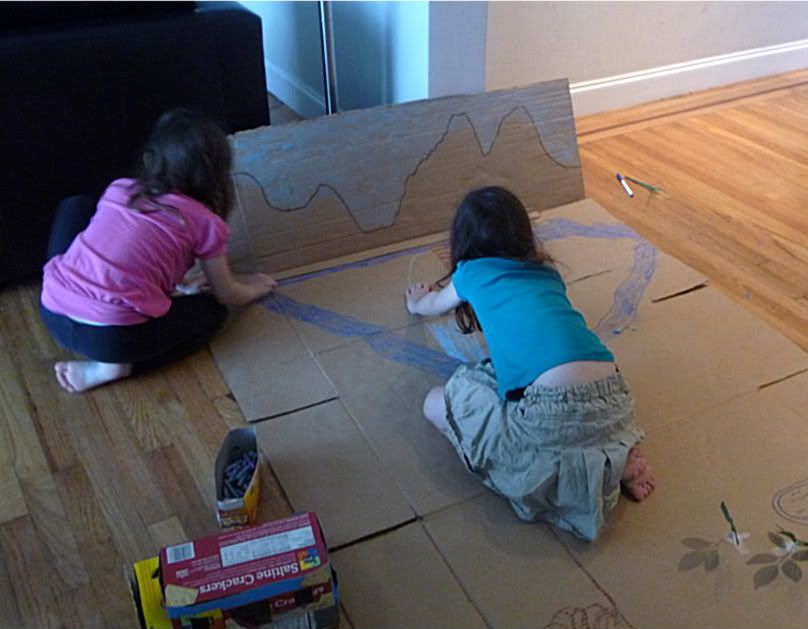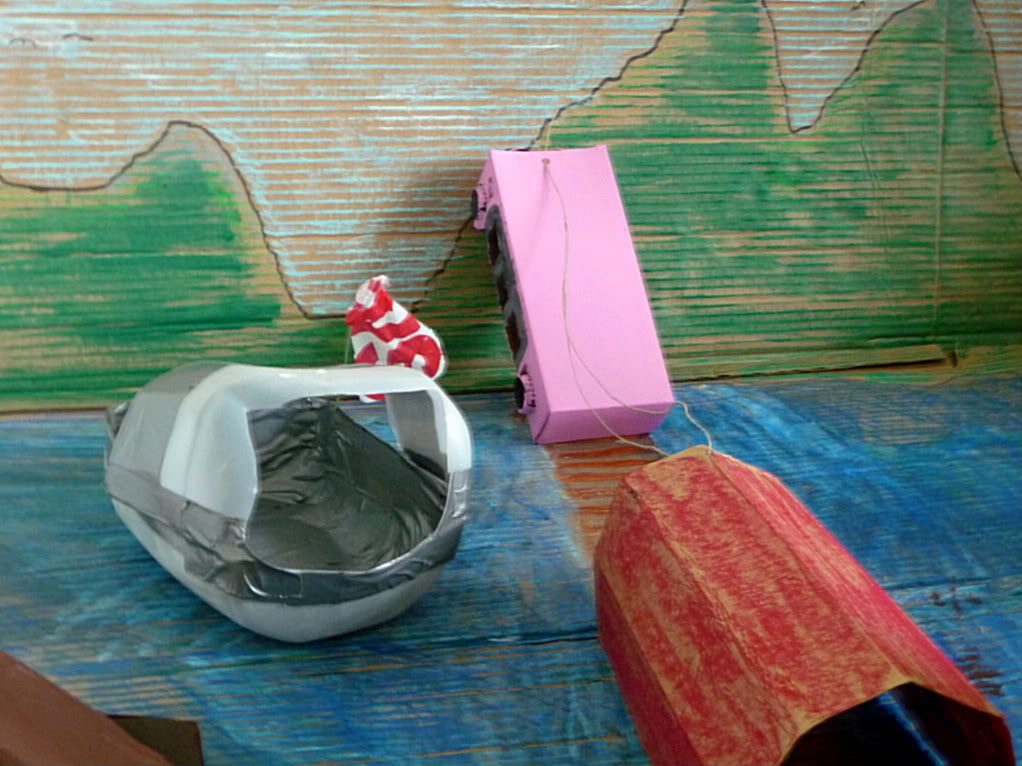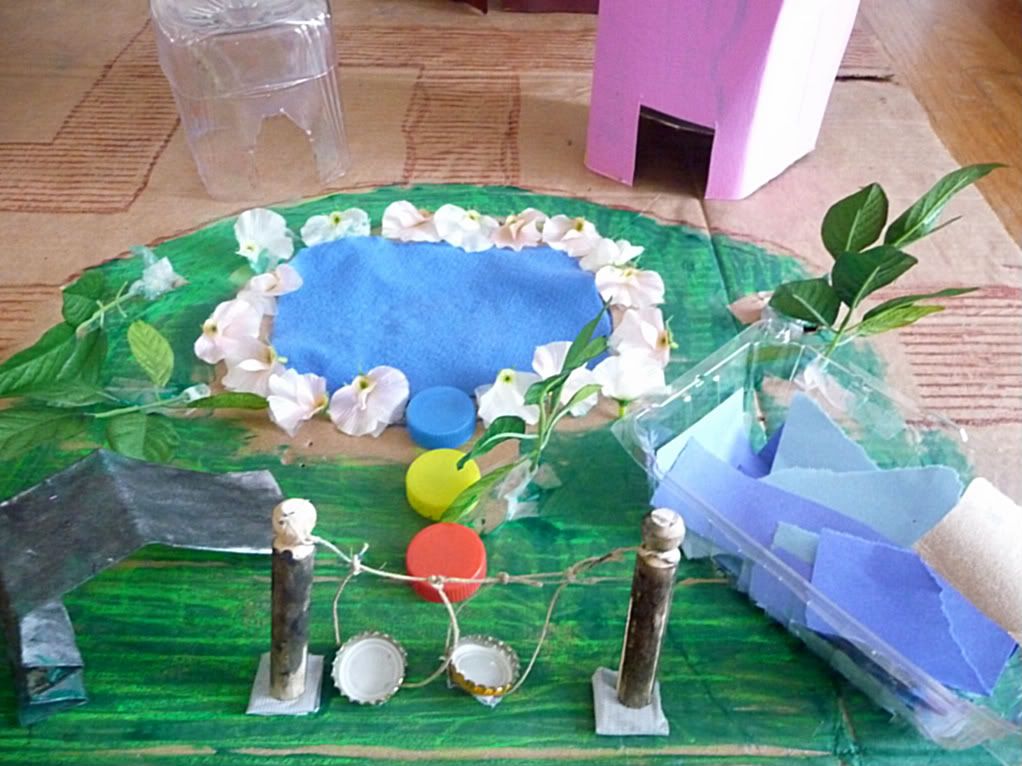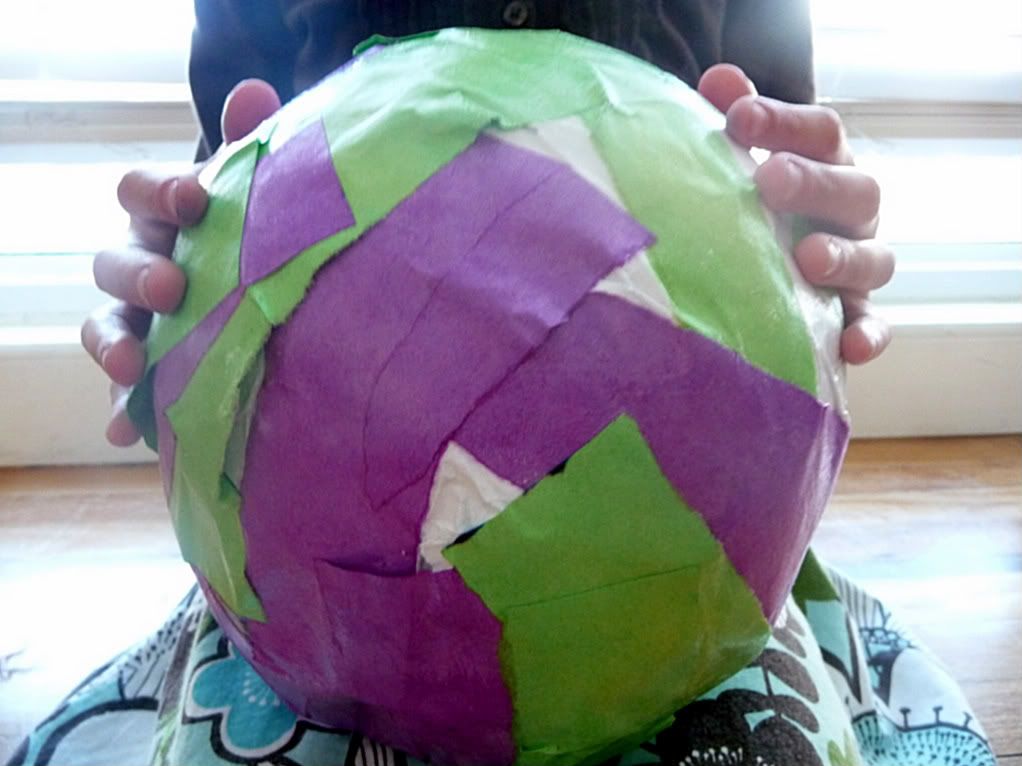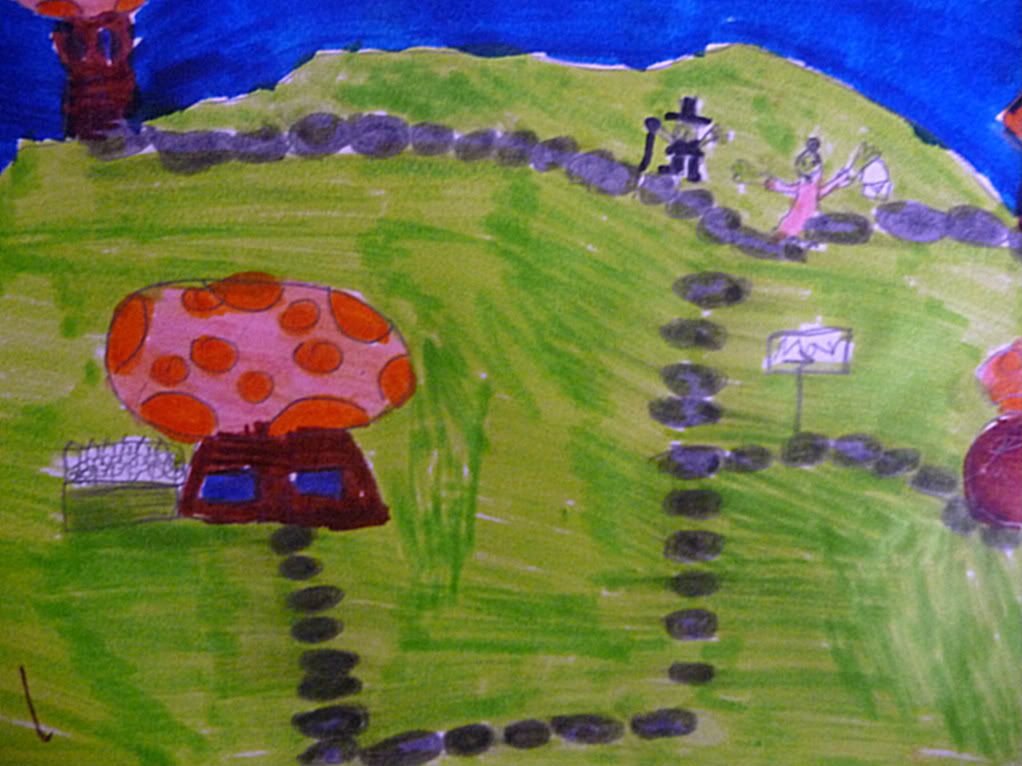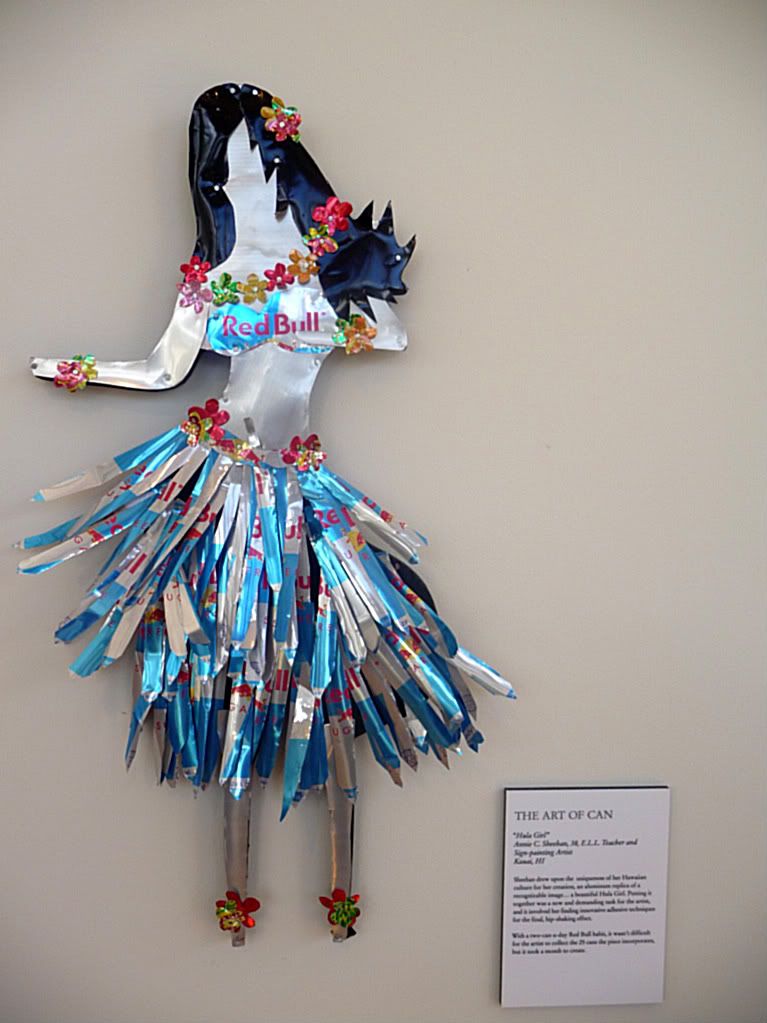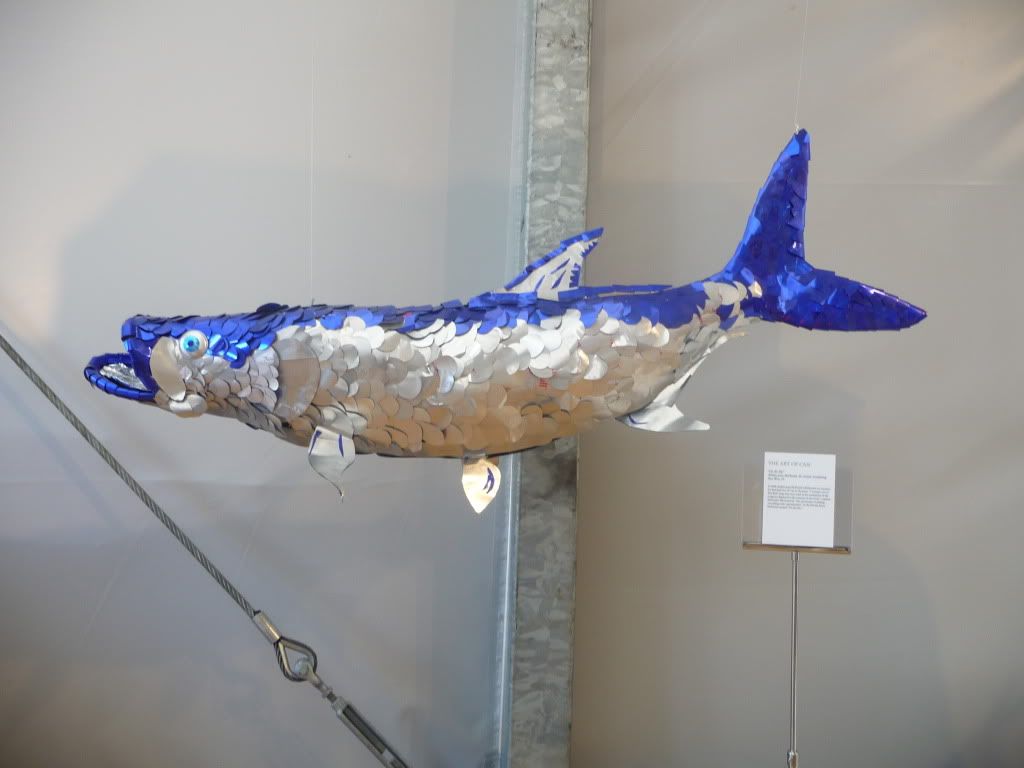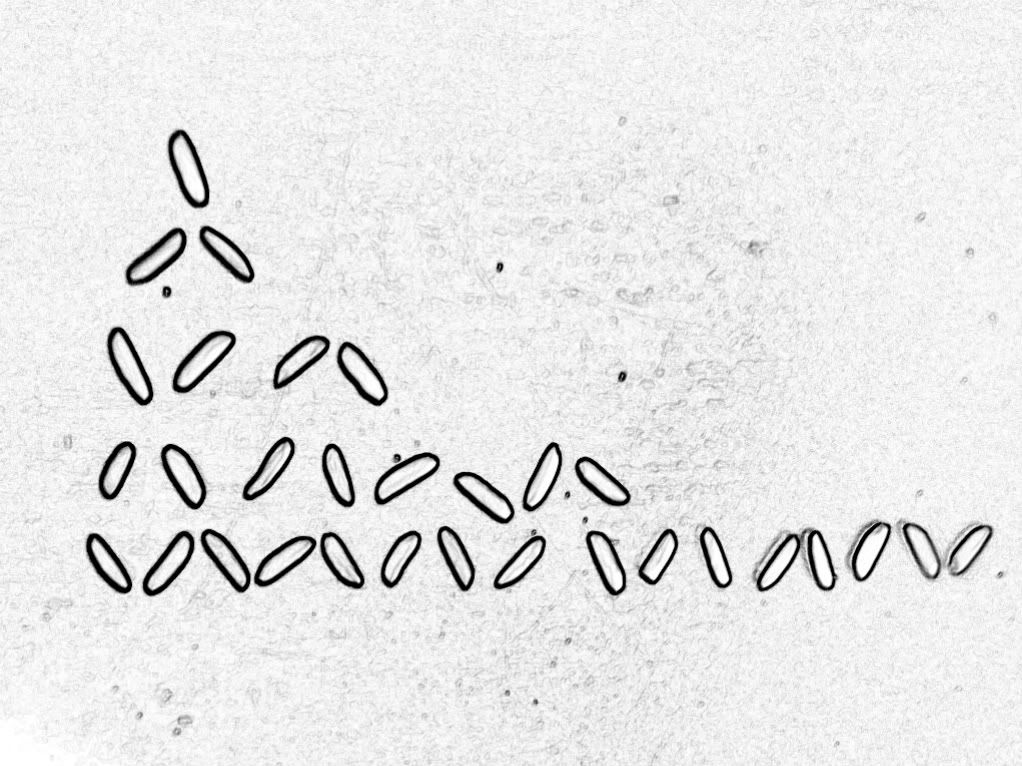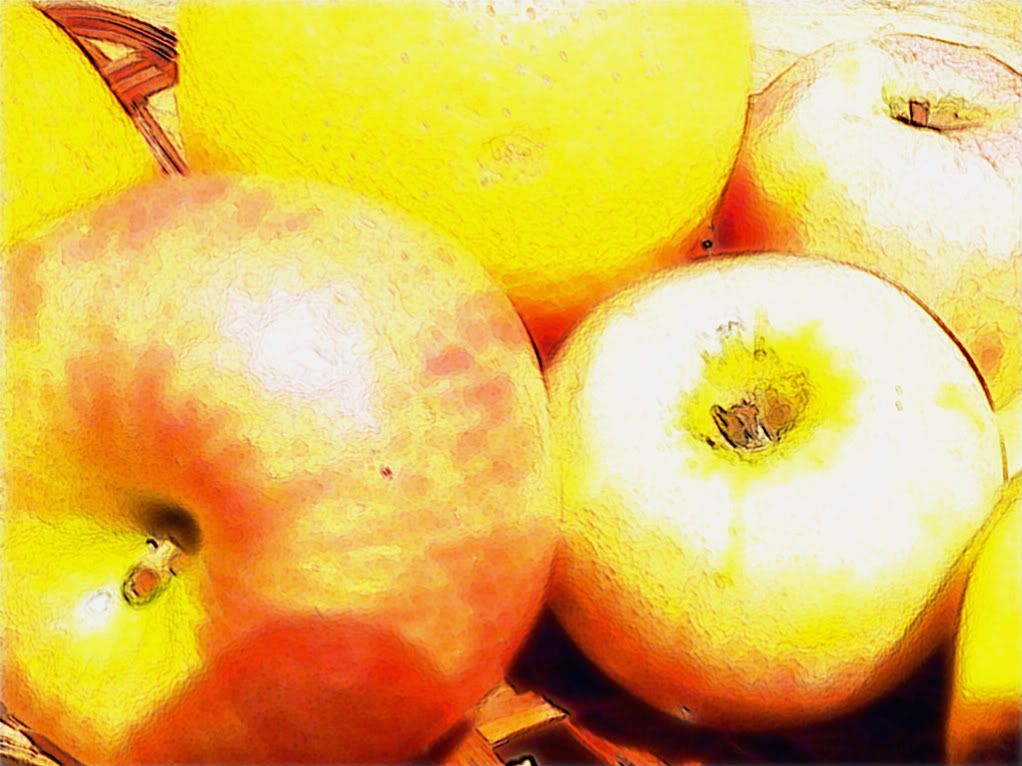Last weekend my family participated in a beach clean-up. Basically, we collected garbage on the shores of Biscayne Bay for three hours. When we were all finished a naturalist picked through our trash and explained to us the perils of cast-off items to sea-life. She also encouraged us to re-purpose items before we tossed them into the trash.
Well,this got me thinking. As much as we try to be "green" by bringing our own shopping bags to the store, packing school lunches into reusable containers, and using stainless steel water bottles our family of 5 still accumulates a fair amount of household trash. First, what could we make with all of this stuff? And more importantly, how can I keep my 3 kiddos busy during their week of spring break?
We decided to create a mountain-side town using only the items that we had lying around the house and packaging material that we would otherwise recycle or throw into the trash bin. (The only thing that I ended up purchasing was another roll of duct tape (what can't duct tape do?) and some poster paints. So, the sum total of this project ended up $4. See photos below:
BEFORE
The beginning stages...boxes and more boxes.
AFTER
Mountainside town complete with lake, park, jogging trails, a cathedral, market, city hall, homes, art museum, a ferry, and a funicular to take the town's residents up to the hiking trails.
Lakeside
Park complete with pond, swings, slide, and swimming pool.

